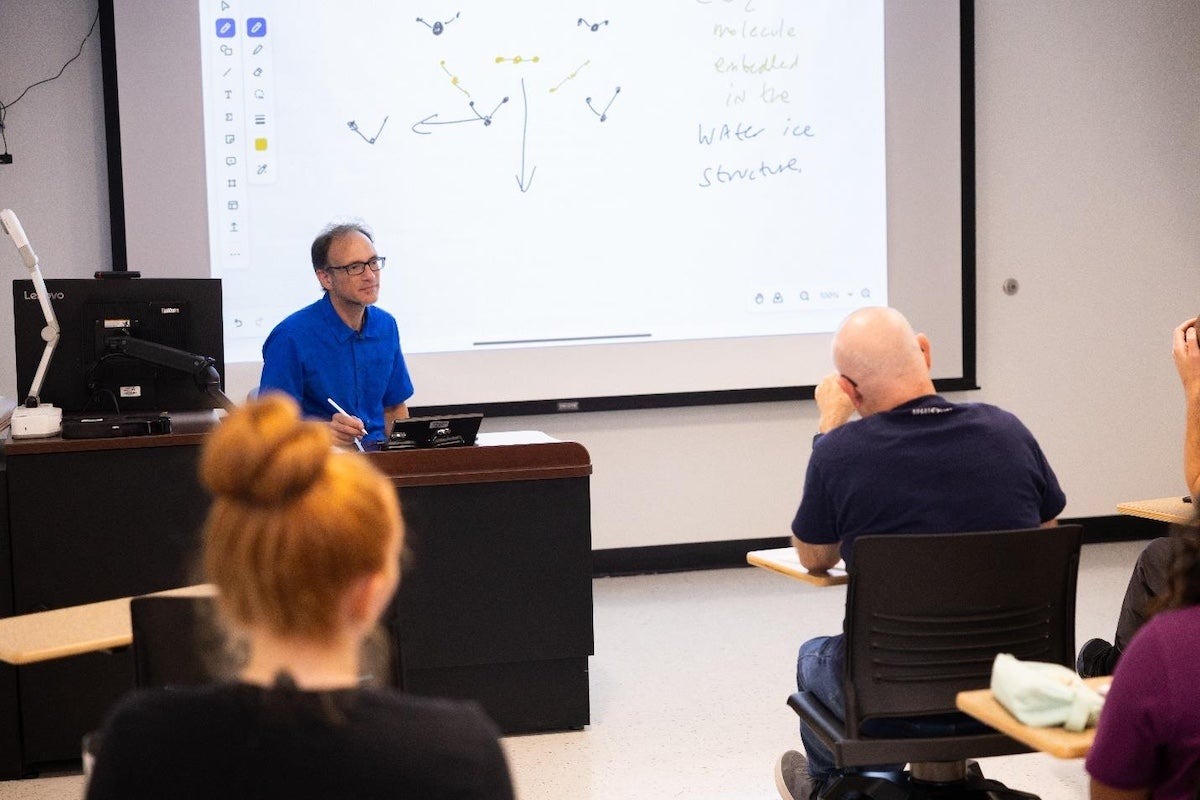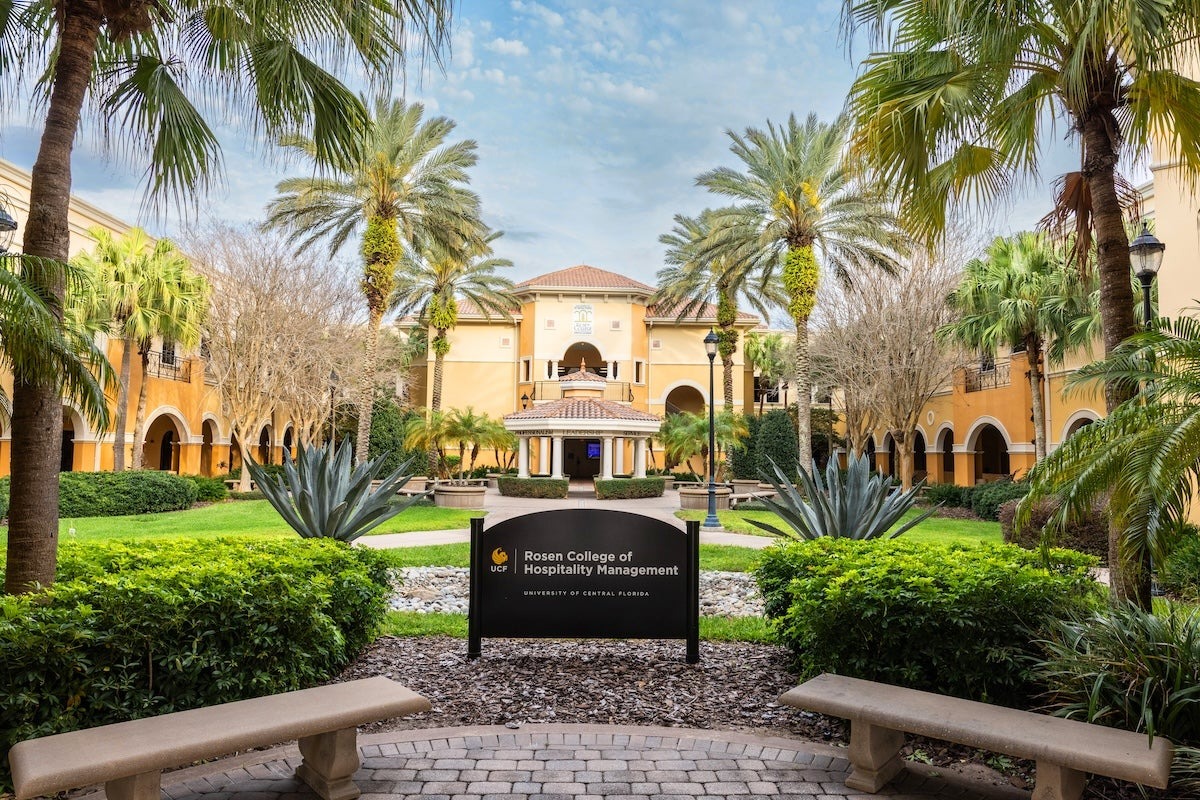UCF-Developed Seawater Battery is Safer for People and Environment
University of Central Florida researchers have helped develop a new, seawater-based battery that’s safer for humans and the environment than the fire-prone lithium-ion batteries that power everything from cell phones to electric cars.
In a study published recently in the journal Nature Communications, UCF NanoScience Technology Center assistant professor Yang Yang and co-authors demonstrated the ability of the new design to be both durable and high performing.
According to the U.S. Environmental Protection Agency, it’s important to work toward developing batteries with environmentally friendly and nonflammable components, as Americans throw billions of batteries into the trash every year.
These batteries contain toxic metals and solvents that can leak from buried batteries and contaminate soil and groundwater.
The new seawater battery UCF helped develop is a step in the environmentally friendly direction as it replaces the toxic solvent that current lithium-ion batteries contain with benign seawater.
Current lithium-ion battery solvents are also flammable, making the batteries a fire hazard if they are damaged or overheat. They can also cause fires in landfills when improperly disposed there.

UCF researchers have tried to overcome the problem of a toxic and flammable solvent by using water-based zinc batteries, but this has been limited by problems with internal zinc growth on the anode, which hinders battery lifespan and durability.
The new design fixes this issue by using a zinc-manganese nano-alloy to form the battery’s anode, which is an internal metal structure that generates electrons that travel to a similar structure, the cathode, inside the battery, thus creating a current and power.
Anodes and cathodes are known as electrodes because of their ability to conduct electricity.
“We developed a durable and robust 3D electrode that can be used for seawater batteries under extreme conditions,” Yang says. “We’ve worked on aqueous batteries and the use of seawater resources for many years, so we have expertise in the field and know where it should go.”
Yang is an expert in battery improvement and alternative fuel cell technologies.
He says they used seawater as the battery electrolyte, or chemical medium that allows the electrical charge to flow between anode and cathode, because of its abundance and for its potential use in deep-sea energy storage applications.
For example, seawater batteries could be used to power undersea vehicles. And for the alloy they developed, it could be used in both water and non-water-based batteries, Yang says.
In the study, the researchers tested the design and found that the alloy-coated anode remained stable without degrading throughout 1,000 hours of charge and discharge cycling under a high current density of 80 milliampere per square centimeter.
The alloy’s stability was confirmed with synchrotron X-ray characterizations that tracked atomic and chemical changes of the anode in different stages of operation.
The researchers are also currently investigating the use of other metal alloys in addition to zinc-manganese.
Study co-authors were Huajun Tian, Zhao Li, David Fox, Lei Zhai and Akihiro Kushima with UCF; Guangxia Feng and Xiaonan Shan with the University of Houston; Zhenzhong Yang and Yingge Du with Pacific Northwest National Laboratory; Maoyu Wang and Zhenxing Feng with Oregon State University; and Hua Zhou with Argonne National Laboratory.
The research was funded primarily by the National Science Foundation.
Yang holds joint appointments in UCF’s NanoScience Technology Center and the Department of Materials Science and Engineering, which is part of the university’s College of Engineering and Computer Science. He is a member of UCF’s Renewable Energy and Chemical Transformation (REACT) Cluster. Before joining UCF in 2015, he was a postdoctoral fellow at Rice University and an Alexander von Humboldt Fellow at the University of Erlangen-Nuremberg in Germany. He received his doctorate in materials science from Tsinghua University in China.
Share This Article

UCF Women’s Club Honors 3 Graduate Students with Prestigious Sheila B. Somerville Scholarship
Financial support is often the cornerstone of academic success, and for many students, scholarships open the door to higher education. Beyond easing financial stress, these awards provide recognition, motivation, and a...
Latest News

UCF Launches 1st Planetary and Space Sciences PhD Program in Florida
As SpaceU, UCF is pushing the boundaries of exploration by launching a groundbreaking new doctoral program in the planetary and space sciences. Now, aspiring researchers can apply to the inaugural cohort of...

UCF Fulbright Awardees Bring Their Passions to a Global Scale
Each year, the Fulbright Program offers opportunities for American students to conduct research, teach English, or pursue graduate study abroad. One of the most prestigious international exchange programs in the...

Unleash Opportunities with a UCF Graduate Degree
A graduate degree has the power to unleash opportunities by expanding careers, opening doors to new fields, and increasing lifetime earnings. According to the U.S. Bureau of Labor Statistics (2024),...

UCF Rosen College Ranks No. 1 in the World for Hospitality Education for 2025
One of the most anticipated theme parks in the world is about to open its gates — and right next door, the No. 1 hospitality and hotel management school on...